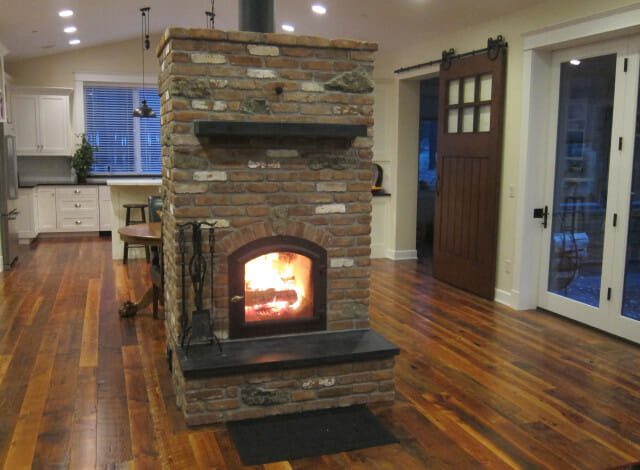The most common methods in the United States for home heating are electricity, gas, oil and wood. However, when it comes to keeping your home warm in the winter, there are countless options available — especially for those who live off grid.
Corn Burning and Multi-Fuel Pellet/Corn stoves
If your parents or grandparents were alive during the Great Depression, chances are they burned corn during the winter to stay warm due to the much lower cost of it compared to coal. Today, true corn burning, and multi-fuel stoves, are making a comeback.
Shelled corn burns at roughly 8,000 BTUs which is similar to wood pellets, and depending on where you live, a bag of shelled corn for heating may actually cost you much less. If you live in an area where the cost of both is about the same, consider a multi-fuel stove that allows you to burn either one, giving you greater flexibility, particularly if there is an unexpected price hike.
Masonry Heaters
Masonry heaters are a very old design that are being re-imagined for today’s green homes. Built of brick, tile, soapstone, natural stone or a combination of those materials, a masonry heater consists of a firebox and channels or partitions used for heat-exchange.
Get Free Backup Electricity — That Works Even During Blackouts!
Because of the way the materials absorb the heat and release it, the heat itself only burns wood for a short time and then radiates it back into the home for up to 36 hours.
Wood-Burning Furnaces or Boilers
If you like the idea of a wood stove or fireplace but want the convenience of a complete home heating system, you many want to look into the ever-expanding market of wood-burning furnaces. Some are easier to retrofit on to an existing home then others, so be sure to do your research. Both indoor and outdoor units are available.
Rocket Stove Mass Heater
Rocket stove mass heaters were developed from the highly efficient wood burning rocket stoves, and masonry heaters. The idea behind it is that the wood fuel is burned at extremely high heat while a large thermal mass absorbs the heat from the exhaust gases. There are a variety of videos and tutorials online, and they can be built in just a few days.
Air-to-Water Radiant Heat
The concept of using hot water to heat your house isn’t new, but these two ideas may never have crossed your mind. If you have a backup generator that uses liquid cooling to keep the engine cool during use, one idea would be to plumb the cooling system through a radiator inside your home and possibly have it selectable to only use an outside radiator during summer and the inside radiator during the cooler months. A second idea could also be to use a small pump to circulate water through solar heating tubes outside and then plumb those water lines inside the home to the radiator. This could work on those sunny days when the temperature is cold, but the sun will heat the water or fluid used to transport the heat inside.
Air-to-Air Radiant Heat
In a similar manner to the previous idea on radiant heat, a system could collect cooler air from outside and pass it through a solar heat collector that would heat the air before being piped into your home. Again, this would work on cold days that had sun that can heat the solar tubes before a pump pushes the air inside.
Solar Window Boxes
Depending on where you live, Solar Window Boxes may be more of a supplemental heating source than a whole house solution. The idea behind them is pretty simple; they are an airtight box made of translucent materials which allows for the sun to warm the air. In turn the warm air enters the home via ducting or other openings into the window of your home.
Solar Window Boxes can be constructed fairly cheaply, although there are also commercially made products available. Several good videos and tutorials are available online.
There are many ways to heat your home. The true limitation is just the depth of your imagination.
What advice would you add? Share it in the section below:
 Off The Grid News Better Ideas For Off The Grid Living
Off The Grid News Better Ideas For Off The Grid Living




